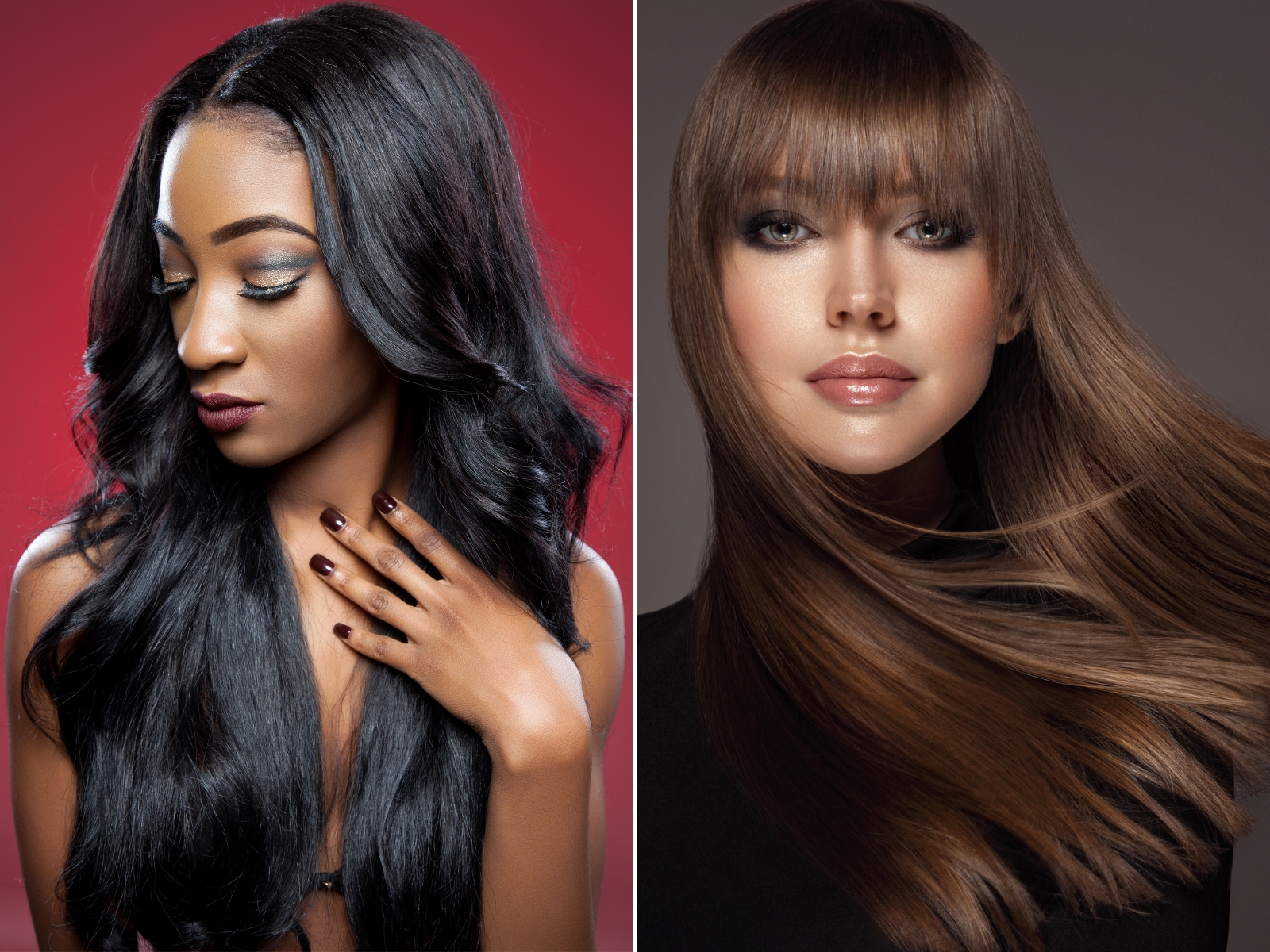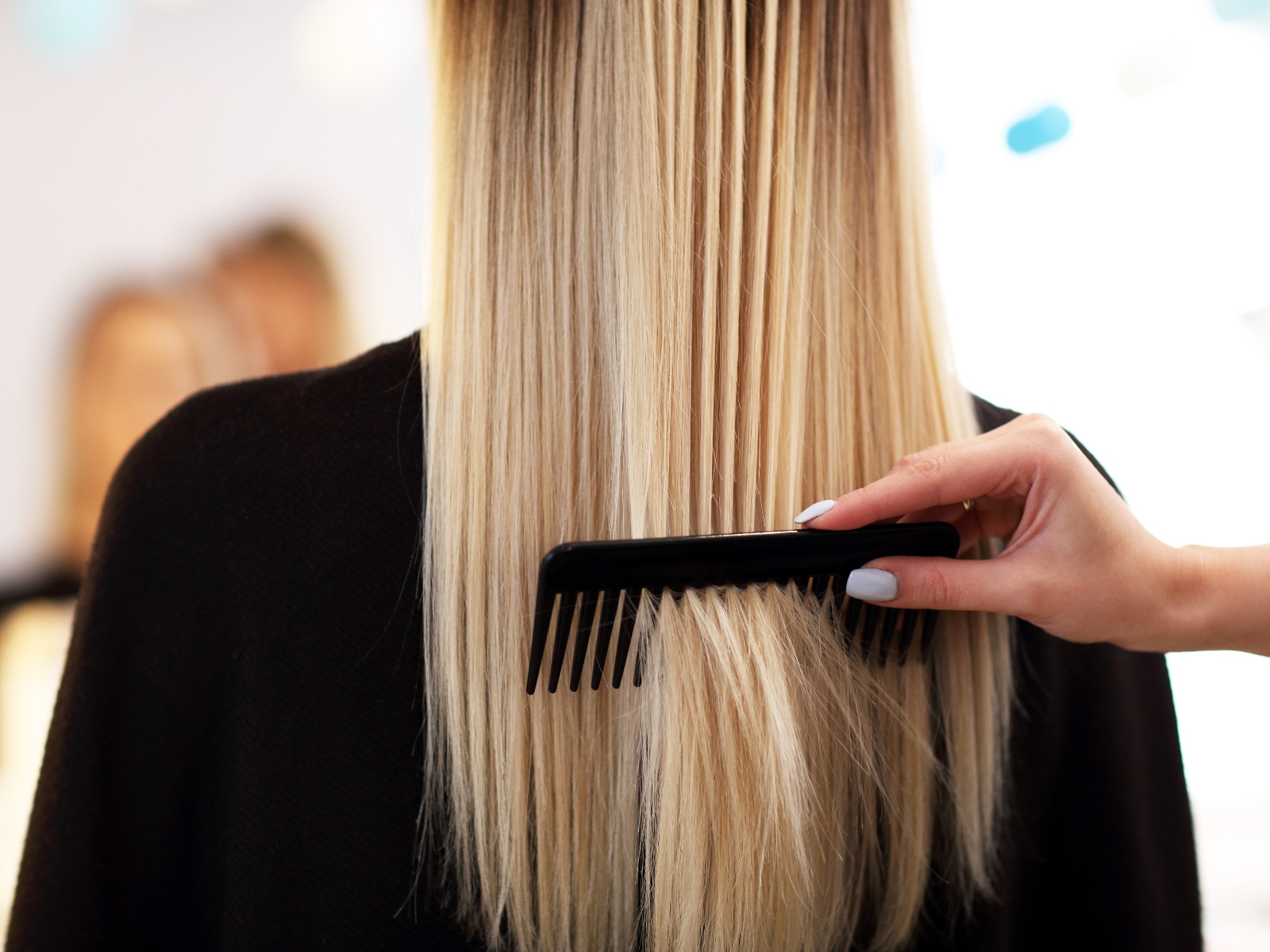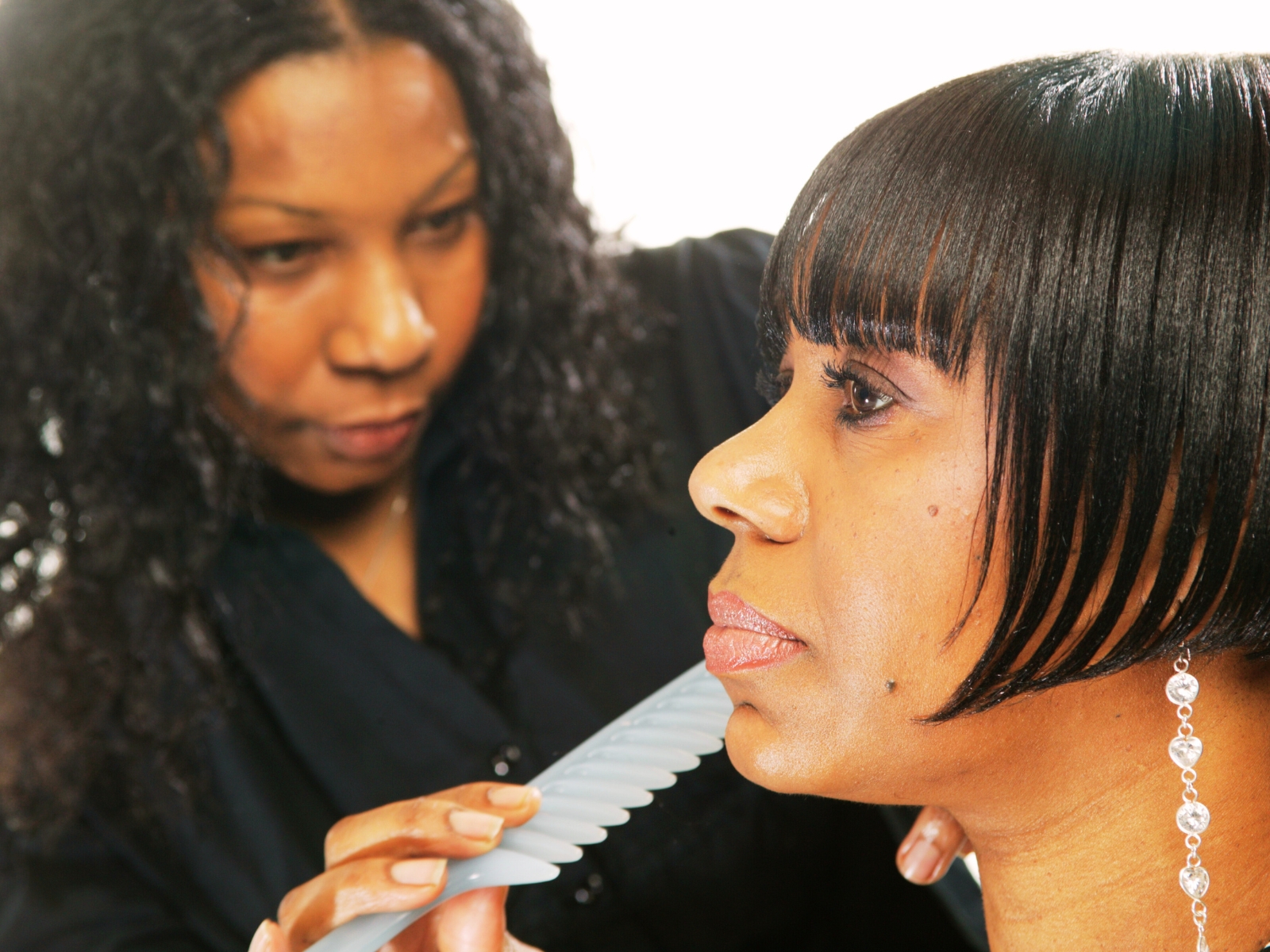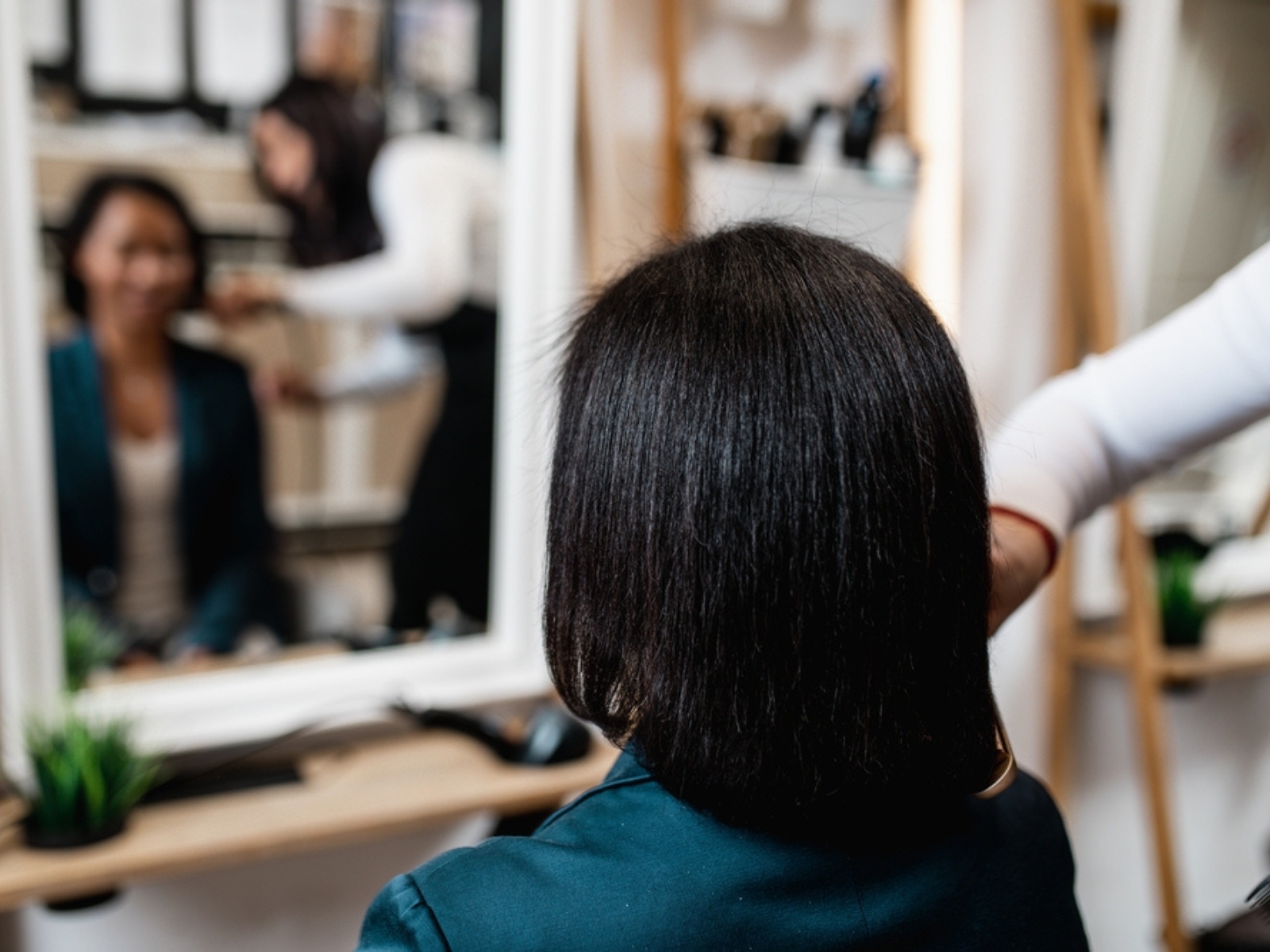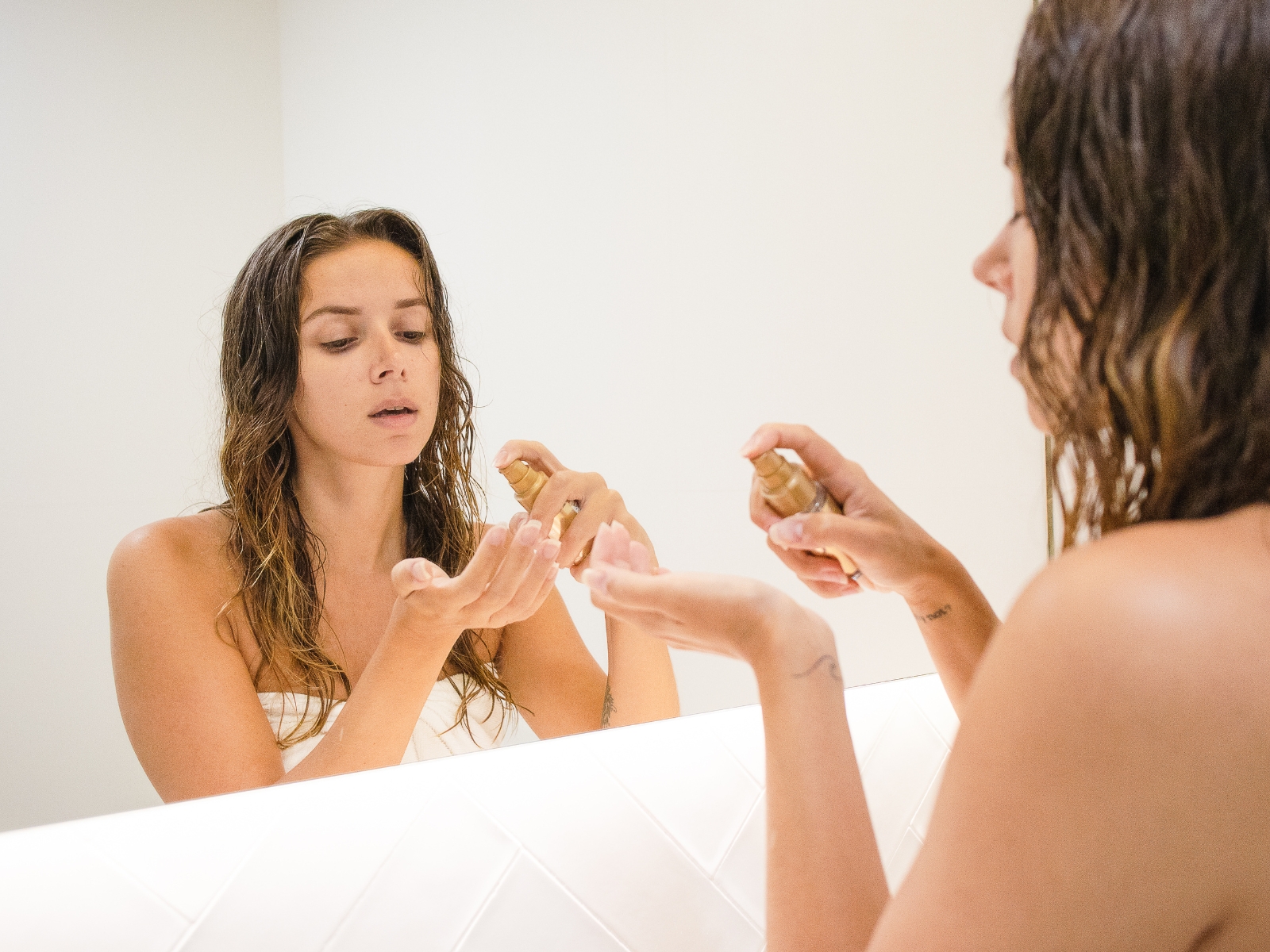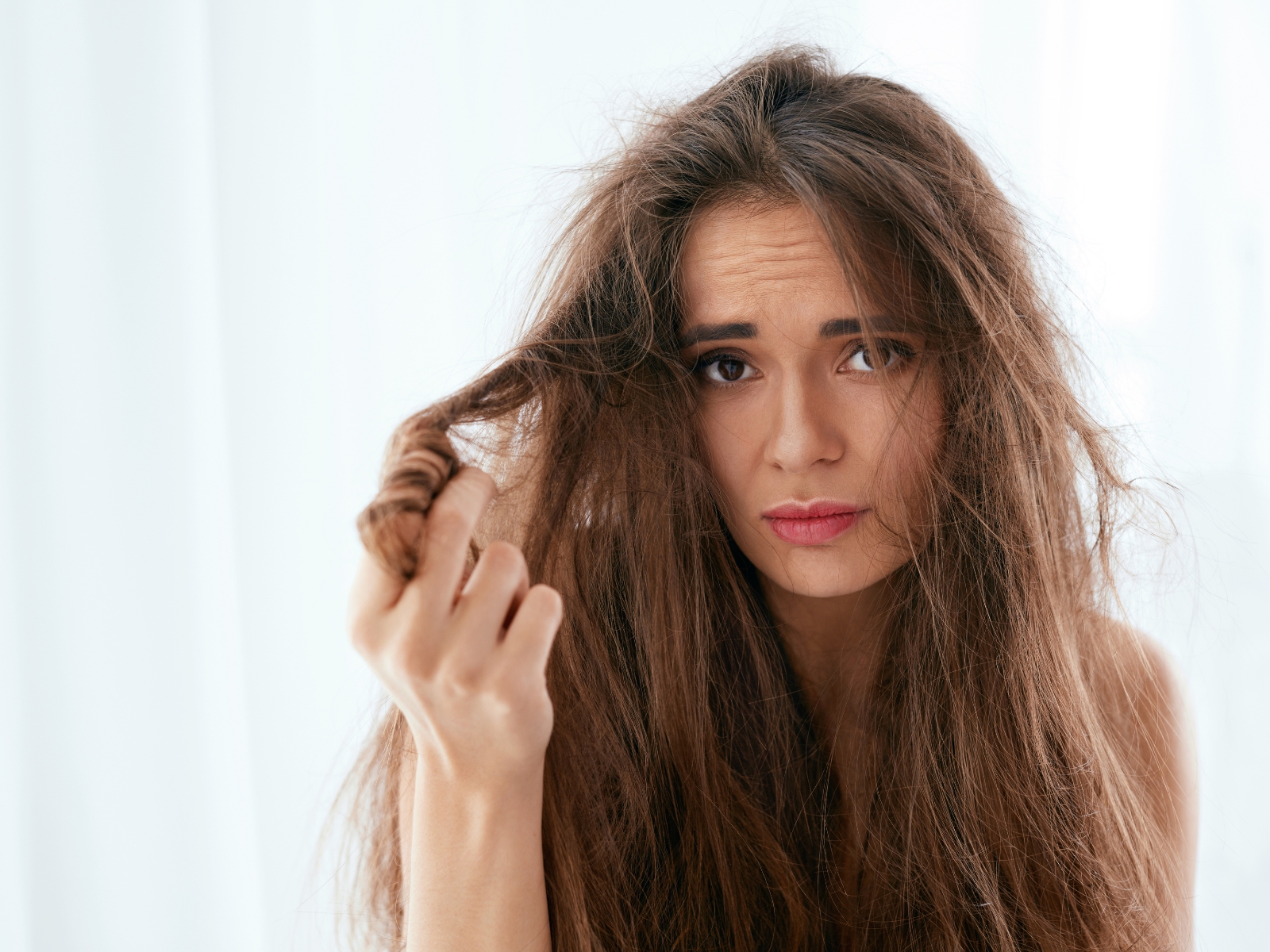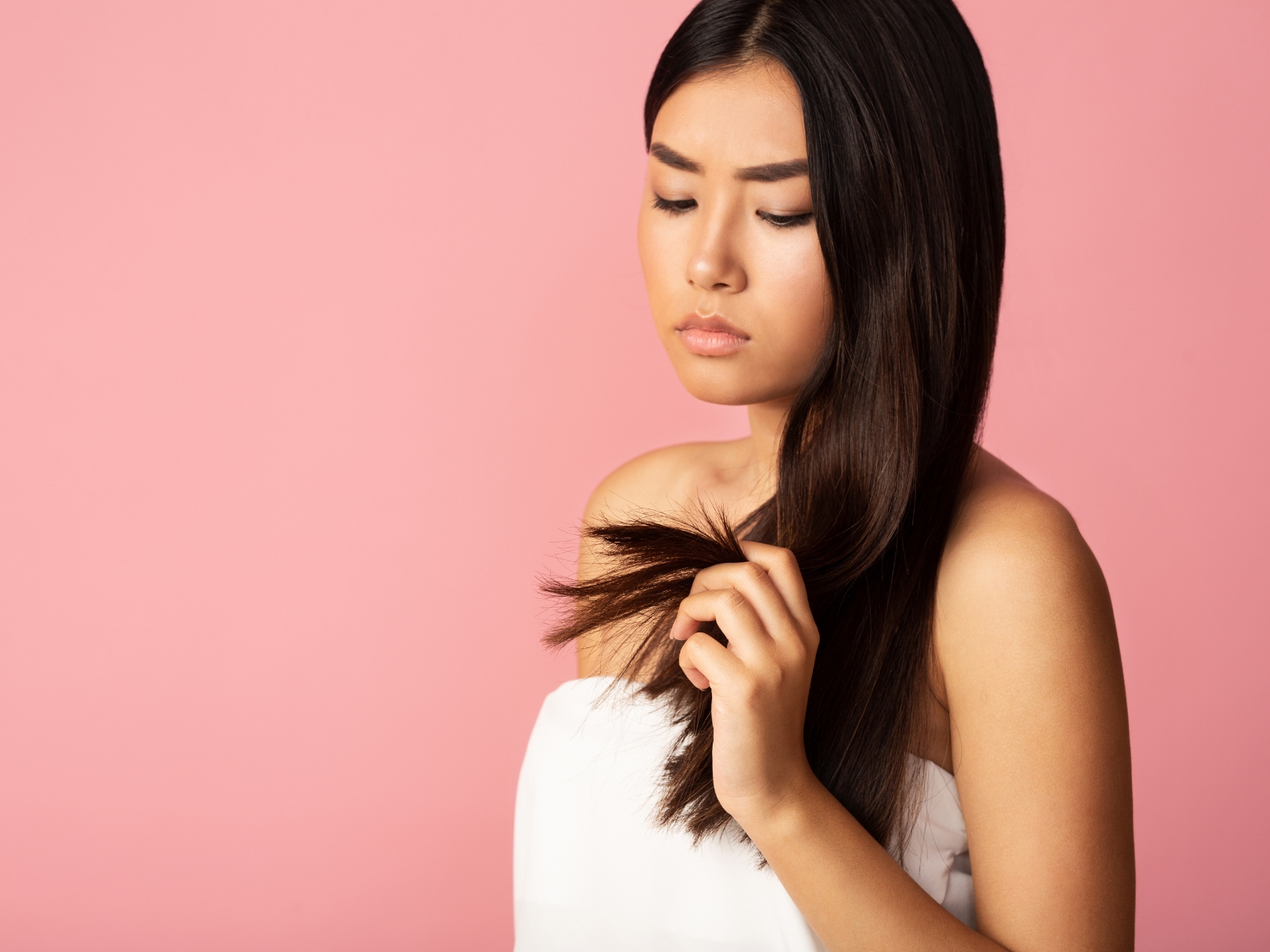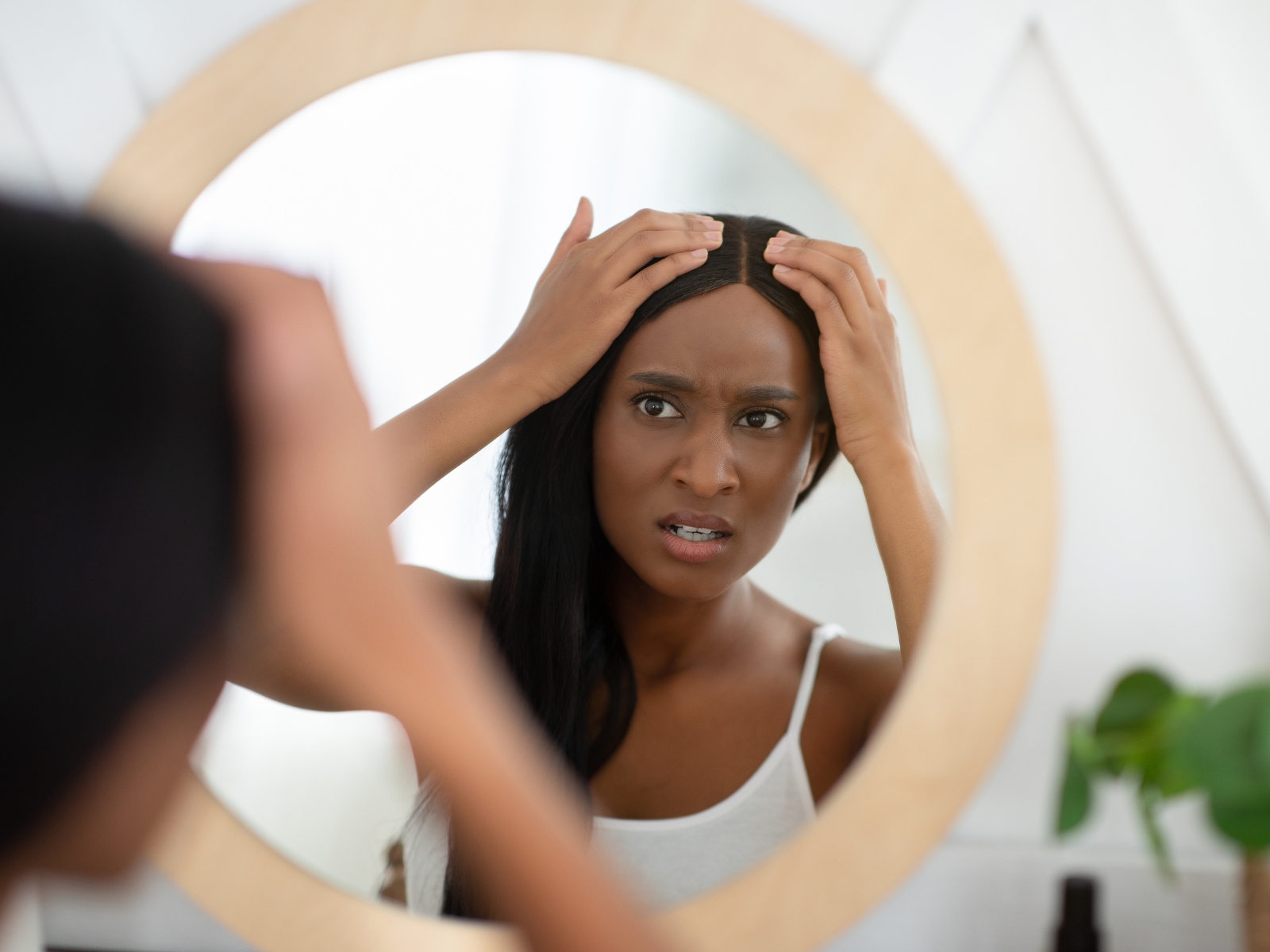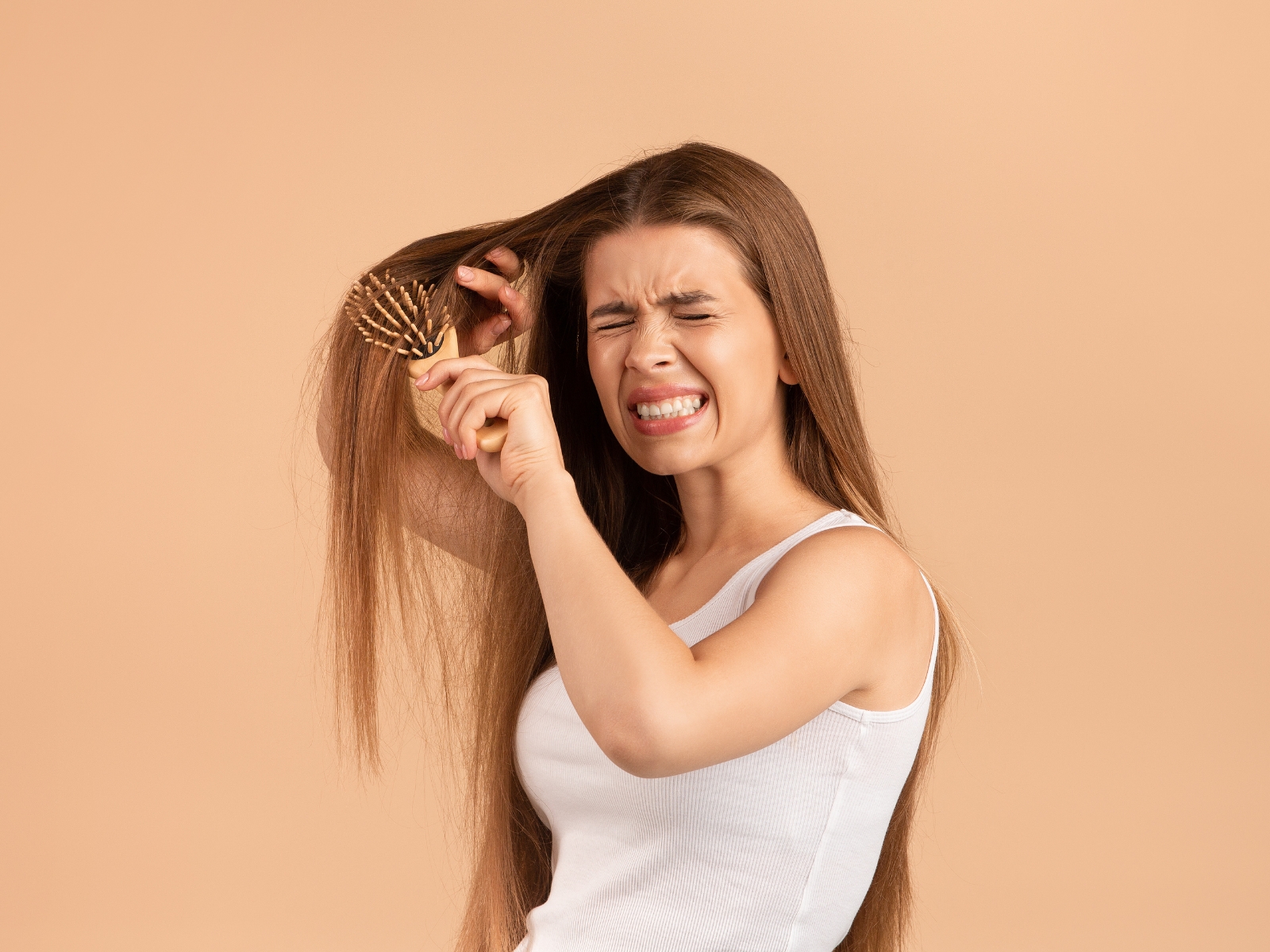Getting your hair straightened might seem like the solution to all your curly girl woes, but before you make a decision to do it, make sure you know what you’re getting yourself into.
It’s not a one-and-done deal—chemical processing of any kind is a commitment and comes with consequences. Lots of things about your hair will change, and only some for the better.
Here’s what I wish I had known before straightening my hair.
1. Take Your Time And Do Research
Before you take the plunge, do your homework: research permanent hair straightening methods well enough to know which questions to ask, then book a consultation appointment with a professional.
A good stylist will take into account your hair type, texture, curl pattern, density, porosity, health, and anything else that might influence the outcome of the straightening process.
Unfortunately, some hairstylists will try to sell you their most expensive treatment even if it doesn’t work for you, so knowing what’s out there can save your hair and save you money.
The most popular permanent and semi-permanents hair straightening methods are hair relaxers, Japanese straightening, hair rebonding and Keratin treatments. They differ in results, duration, price and the type of hair they work on.
• Hair relaxing has been around the longest and is the most affordable. It works on very curly and coily hair, but it should be avoided if your hair is already damaged or over-processed. It’s irreversible and requires root touch-ups.
• Japanese thermal straightening creates shiny, pin-straight hair, but it’s permanent and you can’t undo it. It’s the most expensive, worsens damage and only works on some hair types. This treatment is far too harsh for delicate type 4 coily hair and can severely damage it.
• Hair rebonding and keratin treatments create silky smooth hair, reduce frizz and make the hair shiny, but they wash out quickly and the hair may not return to its original state. Keratin treatments also pose the danger of formaldehyde exposure.
Choosing the right option—or a combination of options—can make a huge difference.
2. Leave It To The Professionals
You’ve seen the at-home straightening kits at the drugstore, but here’s the thing: unless you know really, really well what you’re doing, leave them alone. Even when done professionally, hair straightening treatments weaken the hair, and at-home relaxers are almost guaranteed to damage it. So do your hair a favor and just don’t DIY it.
Expertise is key in getting the best results, so finding an experienced, skilled stylist will make all the difference. Ask for recommendations, search online, check your options before you choose the salon and the stylist.
Don’t let just anyone come near your hair—pick the best you can find. A high price doesn’t always mean high quality, but don’t get swayed only because you find a cheap option. You might be paying the rest of the price with your hair, and a few dollars aren’t worth leaving the salon with fried hair.
3. You Can’t Undo It
Permanent straightening can’t be reversed. Straightened hair lasts until new hair grows out and will never go back to its natural curls. The other side of this is that any new hair growth will have to be touched up to maintain straight hair. You can’t change your mind and get your old hair back.
And if you went to a salon where they didn’t know what they were doing, you won’t even have nice hair to regret: instead, it will just be damaged, smelling of chemicals and more fragile than ever.
Even semi-permanent treatments like hair smoothing will affect the texture of your hair and it may never be the same. These treatments wash out but they still affect the hair, although not as much as hair relaxing and rebonding.
4. Once You Start, It’s A Commitment
Straightening your hair requires ongoing maintenance. Be sure this is something you want and you can commit to before you sit on the chair.
As your hair grows out, you’ll get a mix of curly roots and straight ends. Because of the regrowth, you’ll have multi-textured hair and need constant expensive touch-ups that take a lot of time. You won’t be able to expose your hair to the weather as carelessly as you once could because the sun can damage it. Caring for your hair will take lots of your time and the new products you’ll need are expensive.
With all these lifestyle changes, special haircare requirements, dryness and frizziness, you’ll have a feeling that your life revolves around your hair. But maybe it already does—so you’ll have to figure out if it’s worth it.
5. Follow The Post-Straightening Care Rules
After straightening your hair, you’ll have to develop several habits which you may not have had beforehand. Managing chemically treated hair means you have to handle it with special care to keep it straight and healthy which takes effort, time and money.
This is an incomplete list and there may be other hair care requirements in your particular case, but it might give you an idea of what to expect.
- You must follow aftercare instructions given by your stylist after the treatment.
- Common shampoos and conditioners contain sulfates, so for washing and maintenance after the treatment you’ll have to switch to new products.
- Any products that dry out your hair are off the table and moisturizing products are necessary.
- You’ll have to be careful about nutrition and water intake to avoid further damaging your hair.
- Regular towels can damage your hair, so you’ll have to switch to microfiber ones.
- You must protect your hair from UV rays with hats, scarves, etc.
- You must get frequent trims to remove damage and split ends to prevent it from spreading.
- Brush your hair only with brushes that don’t damage hair.
- Never use hot styling tools.
- You have to regularly deep condition your hair.
6. Getting Your Curls Back Won’t Be Easy
If you decide you’re done with the whole song and dance and want to go back to your natural hair, the process can be excruciating. And additionally, there’s a possibility that you might lose your natural curl pattern permanently and never get back the hair you had before straightening.
Lots of people who straighten their hair struggle with damage caused by both the procedure and their own handling of their hair. As your hair grows out, you’ll undoubtedly be tempted to straighten the curly roots with a flat iron, but even touching straightened hair with heat styling tools can destroy it.
Growing back your natural hair after chemical treatments is a slow, painstaking process. Unless you’re brave enough to chop it all off and let it grow all over again, you’ll have to care for your existing hair until your natural hair regrowth is at the length you’re comfortable with.
Using deep conditioning treatments, gentle shampoos, getting regular trims, never using hot tools and being extra kind to your hair might do it, but the sad reality is that your hair might never be the same.
7. It Can Make Damaged Hair Worse
If your hair is already damaged, permanent straightening will make it worse. Even if it’s not already damaged, there’s always a chance that straightening can fry your hair. The risk is reduced if it is done by a professional who knows how to do it right, so don’t compromise on that.
Chemicals plus heat equals damage. You can experience dehydrated hair that’s harder to style and takes longer to dry and rough, brittle strands that lack volume. If your hair was already damaged, strands breaking off and falling out are almost expected. You can end up with limp, broken hair in addition to everything else involved in having straightened hair.
Choosing a good salon with expert technicians who use the best product and the best tools and who will warn you if your hair is too damaged to straighten is your best option if you want to avoid all the unnecessary damage.
8. It Can Cause Scalp Problems And Lead To Hair Loss
The chemicals in the relaxers and straighteners are used to break the bonds in the hair or activate substances. They’re very harsh and harmful to hair, and even if you don’t notice immediately, they can damage not only your hair but also your scalp.
Dry or overly greasy scalp, dandruff and itching are all possible side-effects. An irritated scalp and brittle strands are a recipe for breakage and hair loss, and instead of a glossy mane you could end up with thin hair with rough, wispy, straw-like strands.
9. Coloring Straightened Hair Can Cause Damage
You have to be very careful if you want to both color and straighten your hair. Two chemical processes done on your hair are not only damaging, but they can also give you different results than you expect.
If you color your hair before chemically straightening it, the chemicals can strip your hair color. If you’ve bleached your hair, you should skip straightening altogether or it could get damaged beyond repair.
You can color your hair two to three weeks after straightening it, and it’s best left to the professionals. The coloring process has to be taken slowly, especially if you’re lightening your hair.
10. Be Aware Of The Health Risks
Hair straightening can have negative side effects that include heat damage and loss of natural curl pattern, but it can also pose serious health risks from allergic reactions to exposure to carcinogenic substances, especially with prolonged use.
Chemical hair straightening procedures use heat and harsh chemicals to break down natural bonds in hair. Exposure to these chemicals may cause various health issues including uterine cancer, breast cancer, endometriosis and uterine fibroids.
The only way to eliminate this risk is not to use chemical hair straighteners, but if you do use them, try to use them as infrequently as possible, to only have the procedure done at a reputable salon and always do a patch test to see if you’re too sensitive to certain substances.

